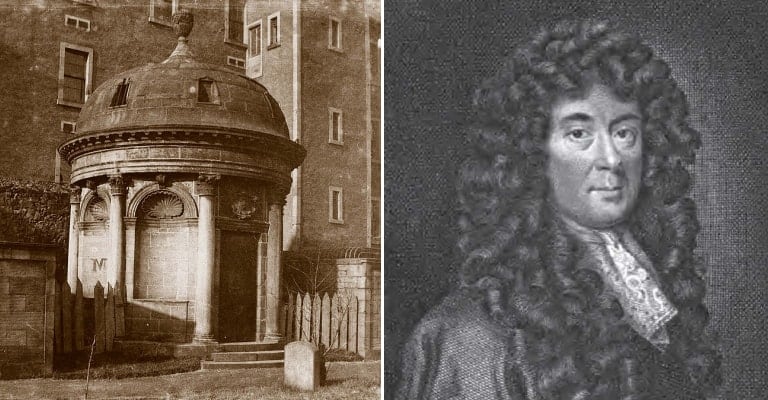Since the sixteenth century, Greyfriars cemetery has been the last resting place for the great and good in Edinburgh’s old town. The cemetery was once the rolling fields of a Franciscan monastery. Now, its ground swells to an unnatural height with the sheer numbers of bodies. Amongst those remains are James Hutton, the father of modern geometry, William McGonagall, the so-called ‘worst poet who ever lived” and 37 Chief magistrates and numerous other city officials. The Cemetery is also the last resting place of Greyfriars Bobby, the faithful Skye terrier who reputedly guarded his master’s grave in the cemetery until his death in 1872.
Each year, thousands of tourists flock to Greyfriars to visit these historic graves and listen to the stories of their occupants. They also come for the ghosts. For not all of Greyfriars history is pleasant- and nor were all of its occupants. However, since 1999, a southwestern corner of the graveyard has become known as “the scariest place on earth” because of a very particular haunting, one that leaves visitors with more than an eerie feeling but actual cuts and bruises. For this is the haunt of the so-called Mackenzie Poltergeist, who lurks around the eerily named Black Mausoleum and whose history is tied to the tragedy of the nearby Covenanter’s prison.

The Covenanters
The Covenanters were a group of Presbyterian Protestants who first fell foul of the Stuart Dynasty in 1638. In 1637, King Charles I introduced the Book of Common Prayer in Scotland without consulting the Scottish people. Charles, like the Stuart monarchs before and after him, believed in the Divine Right of the Monarch to dictate the spiritual beliefs of their people. So, despite the general uproar caused by his imposition, he declared anyone who worshipped in opposition to his wishes would be committing treason.
Many Scots, however, despite being loyal to the King in worldly matters, believed that no man could act as the spiritual head of another. So, a number of the most determined embarked upon a deliberate campaign of religious resistance. In February 1638, an ever-growing number of Scottish Presbyterians began to gather in Greyfriars cemetery to sign what became known as the National Covenant where they swore loyalty to the King- but denied his right to dictate their religious beliefs. After several months, the Covenant had as many as 300,000 signatures.
There were repercussions. From the moment the Covenant was signed until the invasion of William of Orange in 1688, the Covenanters were to suffer increasing persecution. Initially, ministers with covenanting sympathies were driven from their parishes and covenanters who refused to worship in the local church were fined. However, the situation intensified after the restoration of the monarchy in 1660. Charles II had signed the National Covenant in the 1650’s to win Scottish support for his cause. However, once he was restored to the throne, he turned his back on the covenant. The Covenanters began to preach about the countryside in open defiance of this betrayal. And so, what became known as “The Killing Time” began.

Between 1661 and 1668, around 18,000 covenanters lost their lives in battle or because of persecution. Suspected covenanters were rounded up and imprisoned. Some were transported to America, and others were executed. Many others were killed defending themselves against government-sponsored forces deliberately raised to raid their homes. Pitched battles broke out between the two sides. In the aftermath of one such encounter, the Battle of Bothwell Brig in 1679, some 1,400 covenanters found themselves back where it all began: in Greyfriars Cemetary.
The prisoners were held in what became known as The Covenanters Prison. In reality, this was just an open area, fenced off with bars. Over a four-month period, some were tried and executed while others recanted and were freed. However, the majority of those imprisoned were left to die amongst the dead, from exposure and starvation. By November 1679, only 257 covenanters remained. These survivors were sentenced to transportation to the American colonies. However, their ship was wrecked off the Orkney Islands. By the end of the year, only 48 covenanters were left alive. For many, one man and one man alone was held responsible for the cruelty meted out to the Greyfriars Covenanters. That man was Sir George MacKenzie or “Bluidy Mackenzie.”

